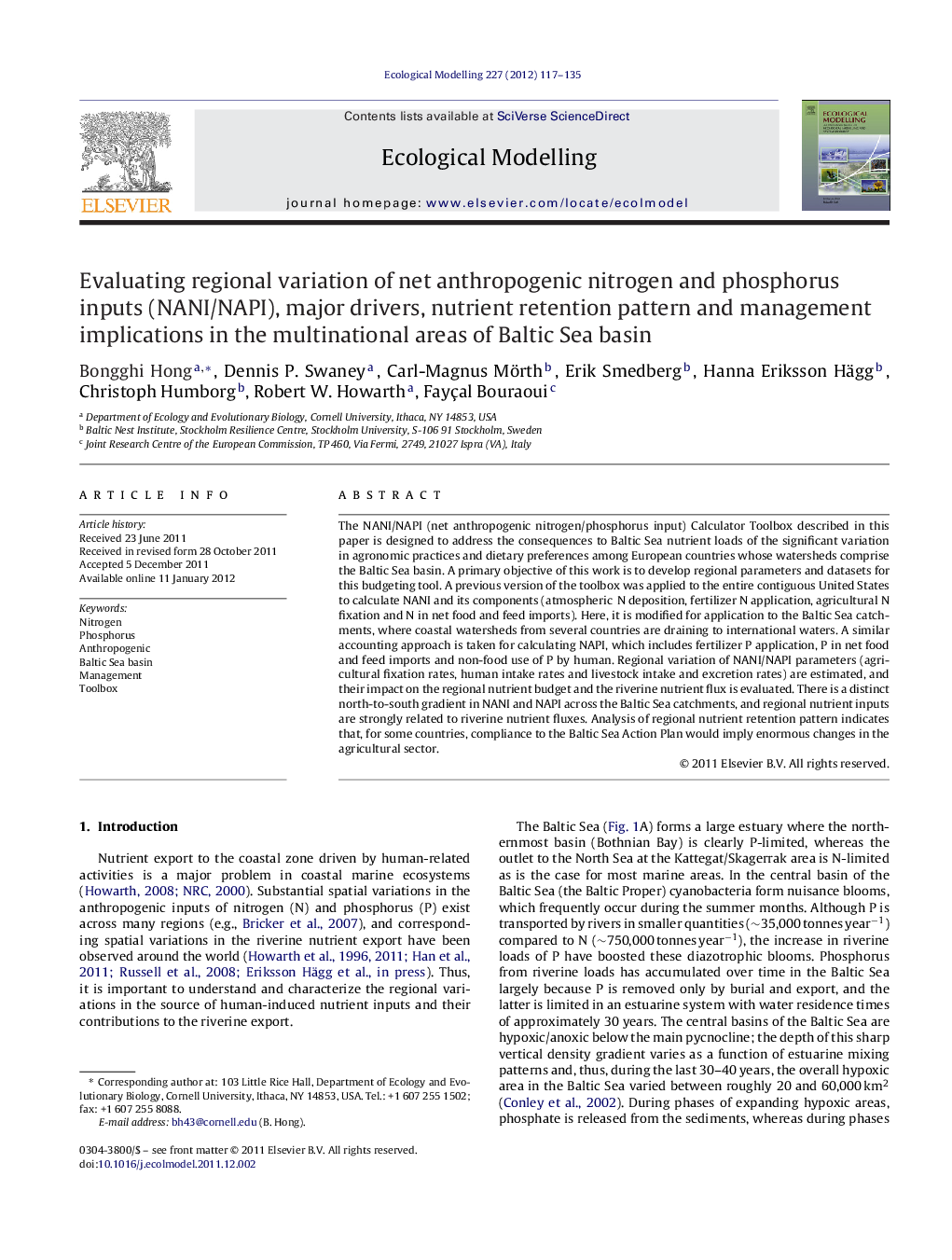| کد مقاله | کد نشریه | سال انتشار | مقاله انگلیسی | نسخه تمام متن |
|---|---|---|---|---|
| 4376569 | 1617516 | 2012 | 19 صفحه PDF | دانلود رایگان |

The NANI/NAPI (net anthropogenic nitrogen/phosphorus input) Calculator Toolbox described in this paper is designed to address the consequences to Baltic Sea nutrient loads of the significant variation in agronomic practices and dietary preferences among European countries whose watersheds comprise the Baltic Sea basin. A primary objective of this work is to develop regional parameters and datasets for this budgeting tool. A previous version of the toolbox was applied to the entire contiguous United States to calculate NANI and its components (atmospheric N deposition, fertilizer N application, agricultural N fixation and N in net food and feed imports). Here, it is modified for application to the Baltic Sea catchments, where coastal watersheds from several countries are draining to international waters. A similar accounting approach is taken for calculating NAPI, which includes fertilizer P application, P in net food and feed imports and non-food use of P by human. Regional variation of NANI/NAPI parameters (agricultural fixation rates, human intake rates and livestock intake and excretion rates) are estimated, and their impact on the regional nutrient budget and the riverine nutrient flux is evaluated. There is a distinct north-to-south gradient in NANI and NAPI across the Baltic Sea catchments, and regional nutrient inputs are strongly related to riverine nutrient fluxes. Analysis of regional nutrient retention pattern indicates that, for some countries, compliance to the Baltic Sea Action Plan would imply enormous changes in the agricultural sector.
► We describe a “toolbox” for estimating net anthropogenic nitrogen/phosphorus inputs (NANI/NAPI) in Baltic Sea catchments.
► Net anthropogenic nutrient inputs include atmospheric deposition, fertilizer, N fixation, and net food and feed imports.
► Significant regional variation was observed in nutrient inputs and riverine fluxes within Baltic drainage from north to south.
► NANI and NAPI were well correlated with riverine nutrient fluxes for major regions of the Baltic Sea catchments.
► Nutrient retention pattern indicates enormous changes in agricultural sector needed to comply with the Baltic Sea Action Plan.
Journal: Ecological Modelling - Volume 227, 24 February 2012, Pages 117–135